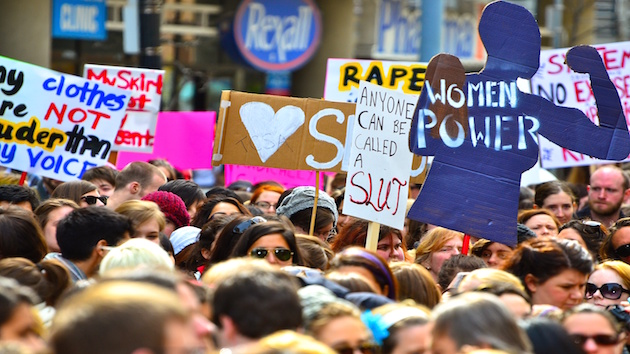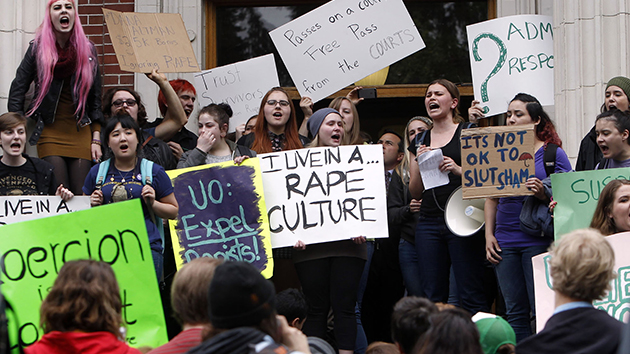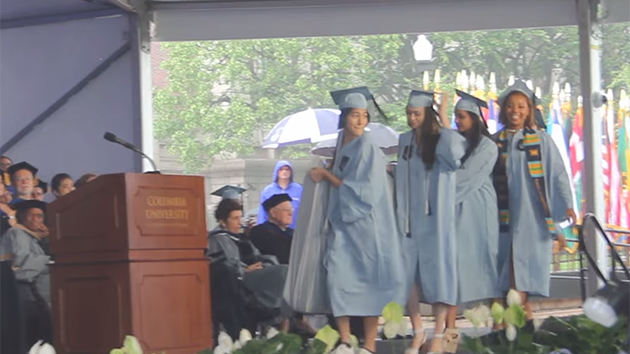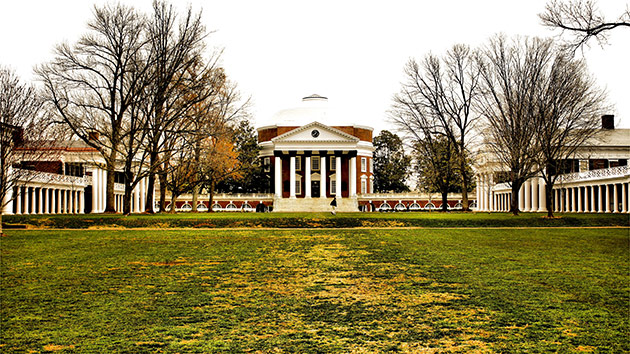
GaudiLab/<a href="http://www.shutterstock.com/pic-311054492/stock-photo-caucasian-female-student-sitting-in-the-hallway-interior-at-campus-college-hipster-girl-sitting.html?src=0EGHElXzIsspAfUXg0tRMg-1-93">Shutterstock</a>
For years, experts have stressed that crime statistics shared by America’s colleges and universities underestimate the number of campus sexual assaults because students infrequently report these incidents to the authorities. Now, data from a survey released last month by the Association of American Universities (AAU) has revealed a second major problem with those numbers: They’re also undercounting the number of rape reports that schools actually receive.
A Mother Jones analysis of data from 25 universities shows that statistics collected under the Jeanne Clery Act of 1990 often encompass only a fraction of the rape reports that schools field each year. For example, 271 Ohio State University students said in the AAU survey that they reported a rape in the 2014-15 academic year, but the school’s Clery Act filings said only 22 students reported a rape during the 2014 calendar year. At Michigan State University, the numbers were 256 to 15; at the University of Michigan, 256 to 21.
Here’s the full dataset comparing the self-reported AAU data with the number of reported rapes that turned up in schools’ Clery Act filings:
Our analysis includes only women who said in the the AAU survey that they reported rape by physical force, threats, or while they were too intoxicated (or otherwise incapacitated) to give consent. (Additional data on male, transgender, and non-gender-conforming students wasn’t made available by the universities.) If we were to apply the survey’s rape and reporting rates to the entire school population, not just the subset who took the survey, we might expect a significantly higher number of reports. As others have pointed out, however, there are problems with extrapolating the AAU survey data in that manner.
When we asked Sarah Van Orman, the executive director of health services at the University of Wisconsin-Madison, about the discrepancy between the two figures at her school, she said the AAU’s claim that 133 students reported a rape last year was a realistic estimate—even though only 22 show up in UW-Madison’s 2014 Clery statistics.
So what gives? The differences point to flaws in the way campuses quantify sexual violence under the labyrinthine Clery Act, which requires institutions to collect and publish the number of offenses reported to law enforcement, deans, victim advocates, resident advisers, coaches, and other “campus security authorities” by October 1 each year. For example, Clery Act numbers count only incidents that occur on campus, on adjacent public property, and in university-affiliated buildings. At many large state schools like UW-Madison, Van Orman says, “most of our students are living off campus, and most of those students who are assaulted are assaulted off campus.”
In an effort to protect students’ privacy, the Clery Act also exempts certain employees, such as licensed mental-health counselors and religious advisers, from adding disclosures to the Clery tally. “Sometimes students think they did make a report, but then, when you dive deeper, you find that they talked to a counselor,” says Alison Kiss, director of an advocacy group called the Clery Center for Security on Campus. According to Van Orman, about half of UW-Madison survey respondents who say they reported a rape did so to a licensed mental-health counselor, meaning that none of those incidents ended up in official statistics.
The idea behind designating confidential counselors is to allow students to seek advice and support without triggering an often grueling university or police investigation into the incident. Yet not every disclosure made to other, nonconfidential employees necessarily leads to an investigation, Van Orman says. And in some cases, making a “confidential” report simply means that the school is not required to record the incident: A 2009 investigation by the Center for Public Integrity found that some schools had designed their victim assistance systems in ways that led to nearly every report being designated as “confidential,” keeping official tallies of campus sex offenses low.
Past legislation, including the 2013 Campus SaVE Act, has attempted to fix the Clery Act by expanding the range of sexual-violence incidents that must be reported to include domestic violence, dating violence, and stalking. But the legislation did not clarify the requirements that right now allow most sexual-assault reports to fly under the public radar. For now, self-reported (and imperfect) data in campus climate surveys like the one produced by the AAU is the only way for anyone outside university administration to examine the number of sexual-assault reports that schools receive.
Still, such surveys are expensive to conduct—the AAU survey cost approximately $85,000 per campus—and produce results that are highly specific to each school. The AAU survey, which was limited to a handful of prestigious or well-known universities, does not provide much useful information for other campuses, Kiss says. The Campus Accountability and Safety Act, introduced in the Senate last winter, would require US universities to conduct a climate survey every other year. The bill follows a federal task force recommendation to conduct regular surveys, though the proposal has received pushback from the higher-education lobby.
David Cantor, a statistical fellow at Westat, the private firm that conducted the survey, suggests that administrators use the survey data to discover where reports are getting lost among the many pipelines that exist for sexual-assault reporting. “There could be a number of places that students could be reporting that have nothing to do with the university,” Cantor says. “There’s a certain profile of victims that are portrayed by crime reports, and there’s a whole set of things going on that the police are not aware of.”
This article has been updated.

















